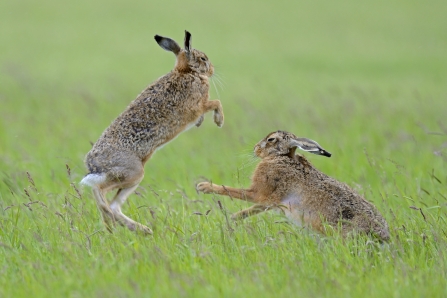Here’s the Wildlife Trust’s guide to some of the weird and wonderful things our local wildlife gets up to at this time of year.
Spring is the start of the breeding season for many birds, including one of our most common birds, the chaffinch. At this time of year the youngest male birds begin to establish and defend their territory, often in woodlands and gardens. During the breeding season the males’ start their courtship in spring with a melodious song and showing off their bright plumage, and females use the quality of the song to help them choose the strongest mate.
Meanwhile on our lakes and wetlands like Testwood Lakes nature reserve near Totton the magnificent great crested grebe’s beautiful display is incredible to see. One bird will shallow dive, only to surface immediately in front of its intended mate. If all is going well the water ballet begins. With orange and black head plumes spread wide, an elegant ritual of head shaking, bill-dipping and preening culminates in the famous ‘penguin dance’, when the pair rush together, paddling their feet frantically to raise upright from the water, standing chest to chest, flicking a beak-full of water weed at each other before one final shake of the head and the weed is dropped, and the deal is clinched.

